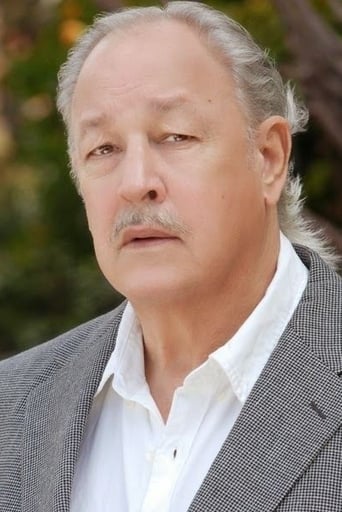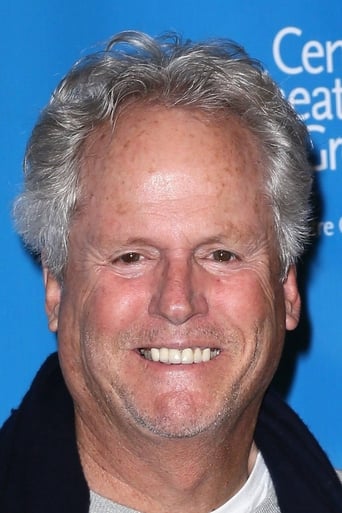Claysaba
Excellent, Without a doubt!!
Humaira Grant
It’s not bad or unwatchable but despite the amplitude of the spectacle, the end result is underwhelming.
Arianna Moses
Let me be very fair here, this is not the best movie in my opinion. But, this movie is fun, it has purpose and is very enjoyable to watch.
Bob
This is one of the best movies I’ve seen in a very long time. You have to go and see this on the big screen.
bkoganbing
To this day Andersonville will connote unspeakable barbarism and suffering in a prisoner of war camp. Yet one has to note that part of the problem was the lack of resources the Confederacy had to maintain prison facilities like Andersonville or Libby.Before Ulysses S. Grant took command of the overall Union Army the Union and Confederacy had regular prisoner exchanges. It was shown however that prisoners never obeyed the terms of their parole, but got back into the fight. Grant changed all that when he stopped prisoner exchanges. With the north having so much more population it was only a matter of attrition before the south had to give up. The south had not the resources to maintain prison facilities, civilian or military. The south could barely feed its own population. Note the adolescent prison guards on the stockade wall. Kids that young were in the Confederate Army in the end and not just drummer boys.However the German emigrant colonel played by Jan Triska employed some barbarism of his own. He encouraged 'The Raiders' a group of some of the lowest low lives you'll ever see to form among the prisoners, to rob them, to terrorize them, to inform on them when necessary. That was a particular Andersonville touch in penal discipline. No big names are in Andersonville, but that added to the realism. John Frankenheimer got an ensemble performance second to none and an Emmy to boot. Standing out are Frederic Forrest as the Massachusetts sergeant who sees his men the best he could, William Coffin as the head of the 'Raiders', and his second in command William Sanderson the last word in bottom feeders and young Blake Heron as a drummer boy prisoner.One thing that producer Ted Turner did not do was get too explicit as to just what young Heron might have had to deal with among a bunch of isolated and starving men. Then again this was a made for TV movie, on the big screen prison rape might have been dealt with.Andersonville is an excellent production, a must see film for anyone even mildly interested in the American Civil War.
Menri11433
Good movie, some electric acting and action scenes, but drifts into the arena of silly on more than a handful of occasions.Gotta disagree with some of "historynut"'s points....for one, I think the TV Guide review of this film hit the nail on the head with regards to the acting: "the performances have the subtlety of sports broadcasting". And that excludes Jan Triska's performance as Captain Wirtz, which I think stole the film along with William Sanderson and Freddy Coffin. All three are over-the-top performances, but each actor knew how to pull it off. The main group of "heroes", however, played up everything they could to IMAX-scale proportions. Oftn to the point where sometimes....well, cartoonish wouldn't too far off in describing it.And as far as the use of reenactors, Frankenheimer does use them very well here, as mentioned by historynut. Where it slips away from him seem to be the stunts...check out the prisoner v.s. raider brawl, led by Limber Jim. There's some play-fighting going on that has not been seen since my high school production of West Side Story.And as far as past reenactor usage in film...I agree they were used well in Glory. I also agree that reenactors were used not-so-well in "Gettysburg". However, for all its instrinsic faults, Maxwell seemed to have learned his lesson when using reenactors in "Gods and Generals". There was a FAR more strict screening process in the casting of onscrean reenactors than in "Gettysburg" (I, too, participated in that film). As well, and perhaps most importantly, Maxwell did not let ANY reenactor attempt his own "death" or even "maiming" in any of the major battle shots without prior expressed permission by him, his A.D. or his stunt coordinator. When reenactors were chosen to "get hit", they were then properly coached in how to take a death fall, and placed strategically away from the actors and stuntmen. "Gods and Generals" also had a much higher production value than here, but that goes with the huge budget the film had.
PMFan
The movie Andersonville was one of intense drama. The historical subject matter made the film all the more pertinent to society today. Man against Man, Brother against Brother. That is what the Civil War was, and Andersonville was its worst. Men treating other men like animals and game for sport. The utter despair. The terrible suffering.Andersonville is set during the Civil War, in the south, in a Prisoner Of War camp run by the Confederate Army. The story depicts the conditions of suffering that the Union soldiers endured while held captive. The best and the worst of humanity is shown in this film as the viewer is shown all ends of the spectrum of pain and suffering.Peter Murnik's character, Limber Jim, was the voice of conscience in this film. Jim was the one who finally stood up to the injustice that other Union soldiers were enacting against their fellows. It was Jim who rallied the troops to a riot to stop the "Raiders" from continuing their carnage. Not a single 'Peter' scene went by without the viewer sensing the intensity. He portrayed it in his face, in his demeanor and most of all, in his eyes. In this film, Peter said so much without uttering a word. The look he gave in his eyes told the viewer the intensity of his feelings. His determination. His desire to see the wrongs righted. In a sense, Limber Jim was one of the saviours of this film. His standing up to the injustice he witnessed and lived through, enabled his fellow prisoners to also rise up and change the world around them, as small as it was.In spite of the fact that this was a film and an artistic production, the real Andersonville shone through. The viewer came away knowing the despair that the Union soldiers felt and lived. There was no question that humanity, as a whole, had been wronged by the cruelty that took place at Andersonville. The human race came away from Andersonville worse off for having realized that we could fall so far from the very civilization we pride ourselves on creating to treat other fellow human beings the way the Union soldiers were treated.Andersonville actually existed, and does so today as a Federal Park and tourist attraction. This movie is a very good link in telling the tale that so many never got to tell. The actors, staff and crew of Andersonville did such a magnificent job that anyone seeing this movie will know what it was like to have been there. They will know the suffering, the pain, the disease, the despair. The cast and crew are to be applauded for their efforts.In his bio, Peter lists Andersonville as one of the projects he is most proud of. And, well he should be. He did an excellent performance and is to be commended. It will go down as one of the favorites with his fans. Once again, Peter's genius comes shining through.
Quinn-5
"Andersonville" is John Frankenheimer's most pivotal step in his quest to regain a perch on Hollywood's "A" list of directors, and he is in true Frankenheimer form in this latest of TNT, Civil War-oriented mini-series. Quite simply, it's about a group of Union soldiers and their span of a year doing hard time in the most infamous of Southern prison camps, and one of the most infamous of prison camps in recorded history, Andersonville, Georgia. Andersonville the prison is literally a fenced-in cesspool of humanity: it's grossly overcrowded, there's not enough food to go around, there's no shelter from the heat or cold, the creek used for drinking water is the same used as a latrine by the camp's entire population, and, on top of all this, there's a vicious gang of marauding prisoner's that prey on their weaker counterparts, taking their clothing and what little food they may have for themselves. I began watching this film expecting a smaller, tamer, less original version of "The Shawshank Redemption", and at several points you'll think likewise: we witness acts of both harsh brutality and stirring compassion, and follow our hero's as they decline physically and struggle to succeed morally. But the period setting and the freshness of the subject make it appealing more often than not. What's interesting about this big-budget, well-hyped production, though, is that the entire cast are relative unknowns, the lead role being held by a young Broadway actor named Jarrod Emick, who's acting demonstrates he is just that: a Broadway actor. He projects his voice and over-emphasizes words as though onstage, and when a dramatic monologue is in order, his facial contortions rival the worst case of constipation one can imagine. The length of "Andersonville" is a problem, as after awhile it just runs out of stuff to say, and appears to be chipping away at the minutes until the conclusion. After all, how many scenes can one sit through of watching deteriorating men rot away in sheets of rain or stifling holes in the ground . . . look for a deliciously vicious role by Frederick Coffin as the evil prison gang's leader, and William Sanderson as his cowardly right hand man. There's also a small role by William H. Macy as a Confederate prison inspector who discovers the camp's horrors and condemns it . . . great score by Gary Chang.





